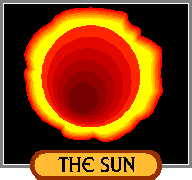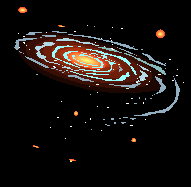

Science Rules!
- EARTH SCIENCE
NEWS
- ASTRONOMY LINKS
- GEOLOGY LINKS
- METEOROLOGY LINKS
- OCEANOGRAPHY LINKS
- MEET MY STUDENTS
- STUDENT PAGE
- TEACHER RESOURCES
- VISIT THE PLANETARIUM
- WHO IS MR. NAP?
- ASTRONOMY LINKS
-
- DO A SEARCH WITH:
- -AltaVista
-Ask Jeeves
-DirectHit
-Excite
-Go.com
-Google
-Hotbot
-InvisibleWeb
-LookSmart
-Lycos
-MetaCrawler
-OpenDirectory
-Yahoo - -AltaVista
THE LIFE OF
A STAR

Computer Lab Activity
In this new, fun, exciting activity, you will learn about stars!
INSTRUCTIONS: Create a new document in Microsoft Word. Name it "star-(your name)" Place all answers in that document.Use this web site to answer questions 1 - 12.
1. What is a star?
2. How long can a star live?
3. How is the composition of stars studied?
4. What is a "binary star system?"
5. Up to how many stars can be in a cluster?
6. What are galaxies?
7. What type of galaxy is the Milky Way?
8. What is a spiral galaxy?
9. Stars produce energy in a process known as "nuclear fission." What is nuclear fission?
10. The closest star to Earth, besides the sun, is _____. It is ___ light years from the sun.
11. Stars and planets twinkle because of the Earth's ___.
12. Do stars twinkle more when they are close to the horizon or when they are directly overhead?
OK, Great! Now use this web site to answer questions 13-20.
13. What is the Hertzsprung-Russell (H-R) diagram?
14. What properties of a star are plotted on the H-R diagram?
15. What type of star is the sun on the H-R diagram?
16. What is a "main sequence" star?
17. Stars convert hydrogen into ___.
18. What happens when a star begins to die?
19. According to the spectral class table, the sun has the same properties as which star?
20. What is "luminosity?"
Use the same web site to describe the following types of stars:
a. yellow dwarf
b. red giant
c. super giant
d. white dwarf
e. neutron star
f. pulsar
g. binary star
h. variable star
Check out this awesome video of a black hole being circled by stars. (it takes a minute to load)
Now go to this site.
21) What is a black hole?
22) Looking at the above diagram, describe the how a star becomes a black hole.
23) What is the volume of a black hole?
24) What is the density of a black hole?
25) If our sun turned into a black hole of the same size, how close would the earth have to get to it in order to be "sucked in?"
26) If we can't see a black hole, how do we know they're there?
Page last updated August 23, 2007
- ©1996-2007 Nap Productions
- Page created by Frank Napolitano
- Science
Rules!


